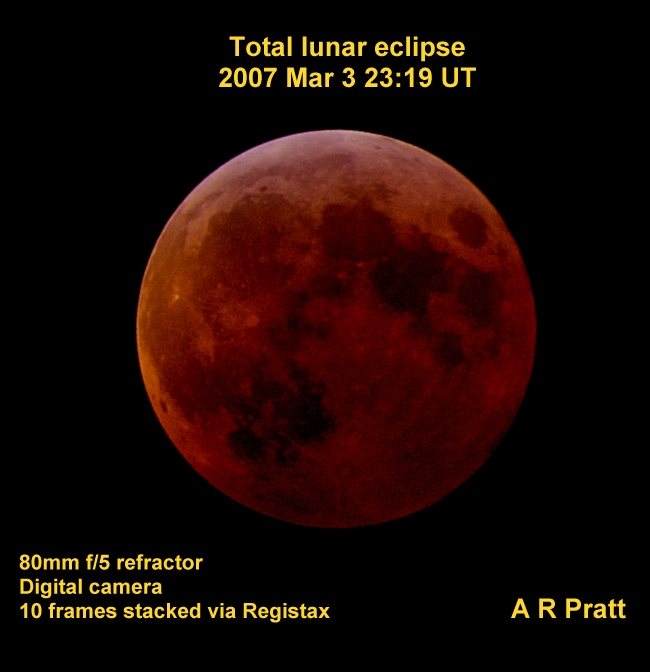People across the western hemisphere may be surprised to see a rust-colored Moon in the sky in a few days - an ominous omen to ancient people but a more predictable occurrence now. Early on 21 February (the evening of the 20 February for observers in North and South America) will be this year’s first and only total eclipse of the Moon.
Bonus: unlike the solar equivalent, the whole event is safe to watch and needs no special equipment.
In a total lunar eclipse, the Earth, Sun and Moon are almost exactly in line and the Moon is on the opposite side of the Earth from the Sun. The Moon is full, moves into the shadow of the Earth and dims dramatically but usually remains visible, lit by sunlight that passes through the Earth’s atmosphere. Stronger atmospheric scattering of blue light means that the light that reaches the lunar surface is predominantly red in colour so observers on Earth see a Moon that may be brick-coloured, rusty, blood red or sometimes dark grey, depending on terrestrial conditions.

The Moon travels to a similar position every month, but the tilt of the lunar orbit means that it normally passes above or below the terrestrial shadow. A Full Moon is seen but no eclipse takes place. Lunar eclipses are visible wherever the Moon is above the horizon.
This knowledge saved Christopher Columbus, for example, who once held off superstitious natives by stating he would make the moon disappear - based on astronomical calculations in his almanac which told him there would be a lunar eclipse February 29, 1504.
The whole of this eclipse will be visible from northwest Africa, Western Europe including the British Isles, the eastern half of North America and the whole of South America. Depending on their location, sky watchers just outside these regions should be able to see at least part of the eclipse too.
In the UK night owls and early risers will both have a chance to watch the eclipse. It begins at 0035 GMT when the Moon enters the lightest part of the Earth’s shadow, the penumbra. Soon after the Moon will have a slight yellowish hue. At 0142 GMT the Moon starts to enter the dark core of the Earth’s shadow, the umbra. At 0301 GMT the Moon will be completely within the umbra – the ‘total’ part of the eclipse has begun. This is the time when it should have an obvious red colour. Mid-eclipse is at 0326 GMT and the total phase ends at 0352 GMT. At 0509 GMT the Moon leaves the umbra and the eclipse ends when the Moon leaves the penumbra at 0617 GMT.
During the eclipse the Moon lies in front of the stars of the constellation of Leo. On the right of the Moon will be the bright star Regulus and on the left will be the planet Saturn.






Comments